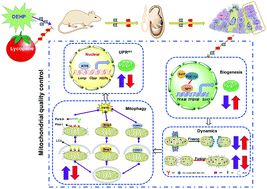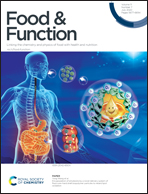Effect of mitochondrial quality control on the lycopene antagonizing DEHP-induced mitophagy in spermatogenic cells†
Abstract
Di(2-ethylhexyl) phthalate (DEHP) is a widespread environmental contaminant, which is mainly used as a plasticizer to improve the flexibility of products; however, its extensive use causes male reproductive damage. Lycopene (LYC) has a protective effect on male reproductive toxicity. Nevertheless, the underlying role of LYC in DEHP-induced spermatogenic cell damage remains unclear. Our study aimed to investigate the role of LYC in DEHP-induced spermatogenic cell damage and its underlying mechanism. Male ICR mice were treated with LYC (5 mg kg−1) and/or DEHP (500 mg kg−1 or 1000 mg kg−1) for 28 days. The results showed that LYC alleviated the DEHP-induced decrease in mitochondria volume density and mitochondrial membrane potential (ΔΨm). Subsequently, LYC prevented the DEHP-induced PGC-1α-mediated reduction in mitochondrial biogenesis in spermatogenic cells. LYC exhibited a potential preventive effect against DEHP-induced mitophagy caused by mitochondrial dynamics disorder in the spermatogenic cells. Meanwhile, LYC relieved DEHP-induced mitochondrial stress in the spermatogenic cells by activating UPRmt. These results proved that mitochondrial quality control may be related to the beneficial role of LYC in preventing DEHP-induced mitophagy in spermatogenic cells. This study provides new evidence of mitochondrial quality control as a target for LYC treatment, which can prevent DEHP-induced toxicity.

- This article is part of the themed collection: Food & Function Recent HOT articles


 Please wait while we load your content...
Please wait while we load your content...